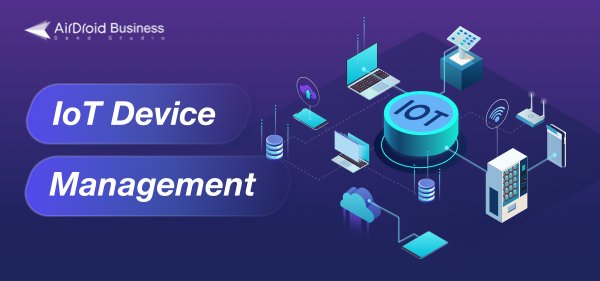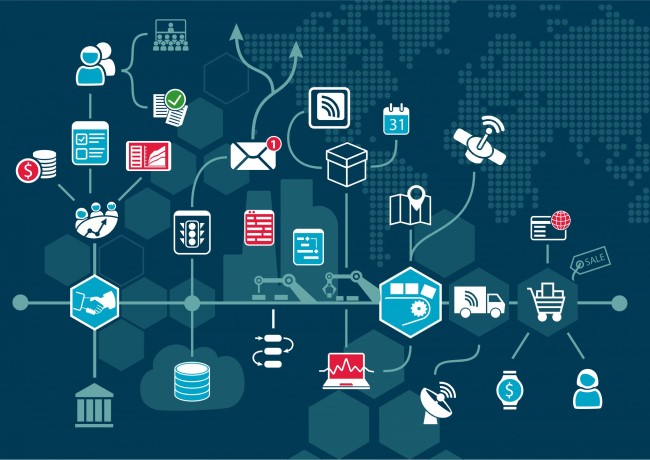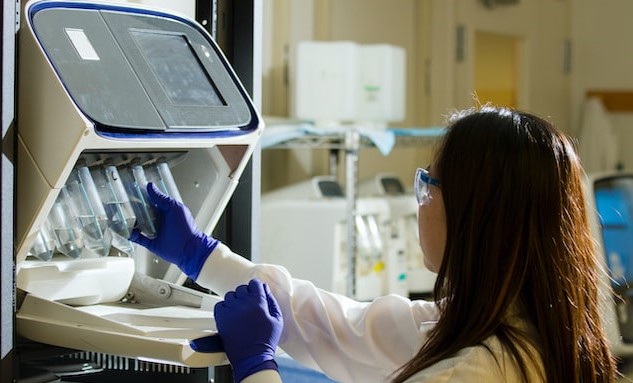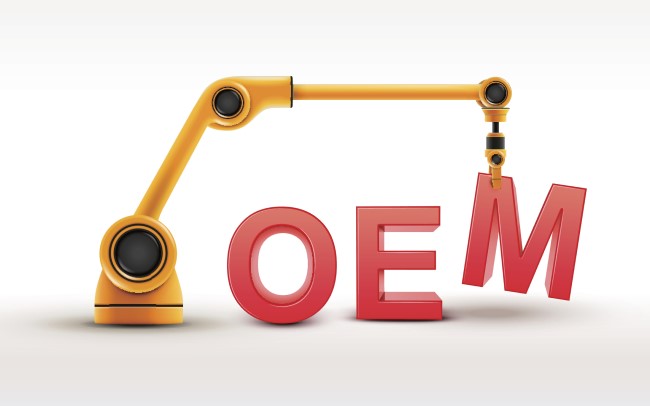What is IoT Device Management? (with Its Management Solution)
Introduction – IoT, or Internet of Things, is a term created by Kevin Ashton - a technology pioneer who founded the Auto-ID Center of MIT. IoT is not new, of course. And you may have seen its practices at least once in everyday life, such as smartphones and home appliances. However, that's not all of IoT. It has an irreplaceable role in the field of work and industry, and then brings about IoT device management.
In this article, we will talk about what is IoT device management and give useful and beginner-friendly content.
- Part 1 : Understand What is IoT & IoT devices
- Part 2 : What is IoT Device Management? How it Works?
- Part 3 : Key IoT Device Management Features
- Part 4 : Applications of IoT Device Management
- Part 5 : Why Companies should Use IoT Device Management
- Part 6 : Concerns of IoT Device Management
- Part 7 : AirDroid Business - Software to Manage Android IoT Devices
1Understand What is IoT & IoT Devices
To have a better understanding of IoT device management, you may need to puzzle out IoT and its devices.
First, let's give a hit to IoT.
What is IoT? To put it simply, it is the interrelated system or network that works on tangible devices. It uses the Internet, which adopts TCP/IP (Transmission Control Protocol/Internet Protocol) framework, to connect devices regardless of distance.

Technology evolution has brought vitality to the field and made it more widely used.
You can see that IoT technology blows the smart home market. Guess you're familiar with using mobile phones to remote control lighting, curtain, or security camera at home.
In addition, IoT helps improve logistics, retail, healthcare industry and others for better customer service and data tracking.
Based on applied industries, IoT can be further subdivided into the following categories:
- CIoT (Consumer Internet of Things)
- IIoT (Industrial Internet of Things)
- IoMT (Internet of Medical Things)
- EIoT (Enterprise Internet of Things)
- IoBT (Internet of Battlefield Things)
- SIoT (Social Internet of Things)
- SaaS IoT
Then, what are IoT devices?
On characteristic, they should be networking-enabled and access the network in the form of wireless. And, IoT devices should be able to carry and send data to another terminal.
Generally, they are composed of these accessories - sensor, actuator, and hardware.
Speaking from a more specific aspect, what are considered IoT devices? Here're some common examples:
- Mobile Phone
- Smartwatch
- Tablet
- eReader
- Laptop
- PC
- Smart Home Appliances
- Digital Kiosk
- Retail POS Device
- Medical Device / Health Monitoring Device
- Automated Warehouse Robots
2What is IoT Device Management? How it Works?
The prosperity of IoT nurtures other demands, especially among enterprises with IoT devices for work and business purposes. With a large number of devices, monitoring and maintenance are necessary, and IoT device management is the solution to meet the need.
As the term 'management' connotes a centralized console, IoT management draws support from SaaS together with other cloud computing services to help with controlling and configuring the company's IoT devices remotely.

Given the interconnectivity of the digital age, and the pressing need for devices that can offer automated solutions in networked environments, to keep eye on corporate devices and maintaining their functionality has become a strategic aim for businesses across a range of industries and sectors.
How does IoT system management work?
The process breaks down into four parts.
- Step 1. Enroll company-owned devices to the Iot device management software.
- Step 2. Configure how devices and apps can be used by employees via the software. There are several features for enforcing rules on device settings, remotely accessing and controlling, blocking apps and websites, etc.
- Step 3. Add members and assign permissions in the software. In this way, the enterprise can regulate how employees can use the IoT device management platform to improve security.
- Step 4. Monitor device status and user activity in the console as an administrator.
3Key IoT Device Management Features
IoT device management solutions may be different in available devices or systems, but with generalities - a centralized console and capabilities to support remote access, control, and monitoring.
What you can do with IoT device management software:
- Batch management and in one platform.
- Design appropriate defense mechanisms and policies to mitigate against security risks, especially that from external cyber attacks.
- Gain full transparency of all networked IoT device activity, downloaded applications, and physical movement between locations.
- Remote control connected devices for repair.
- Preset automation program to make the device work without personnel around.
- Policy - allow or disallow device system settings, network connectivity, external storage equipment, etc.
- Geofencing - track device location and path.
- Two-step verification - use passwords to authenticate user access.
- Kiosk mode - lock the screen into a custom layout and limit available apps and websites.
- App Management - limit available apps; update apps; upload APK and release company-owned apps to certain devices.
- Automate task - run an operation automatically after setting the trigger.
- Remote access and control
- Monitoring and alerts
- Kiosk Mode and Policy
- App and file Management
- Geofencing
We now look at the key features and see how you can make good use of the tool.
1. Device onboarding
Device onboarding represents the process of adding a new device. In some tools, it is also called 'Device Enrollment'.
This feature helps to connect corporate devices with the IoT device management software and further for unified management and monitoring in a convenient dashboard.
Enterprise can choose bulk enrollment or zero-trust enrollment to simplify the process.
2. Device configuration
Configuration is a big part of IoT device management which involves features for data security and work efficiency.
For data security
For work efficiency
3. Device monitoring
Monitorable information includes device status, device temperature, battery, storage capacity, network and its usage, installed apps, location, and others.
For unattended IoT devices, such as a self-service kiosk, software like AirDroid Business offers real-time screen monitoring.
4. Remote IoT device control & troubleshooting
With an Internet connection, IoT device management software is able to remotely address technical faults, reboot devices and apply new security profiles by transferring files.
5. Reports & analytics
Enterprises are allowed to reflect on whether systems and security profiles are appropriately supporting devices. The dashboard facilitates this real-time view of events including devices, apps, and users.
4Applications of IoT Device Management
The implementation of IoT device management solutions can be seen right across both public and private sector settings. Although the ‘Internet of Things’ touches every part of society, we review six industries where the utilisation of IoT devices, and therefore the role of IoT device management, is most prevalent.
Healthcare
Medical professionals, and indeed their patients, are reliant on medical IoT devices for a multitude of services.
Whether it’s a GP accessing consolidated patient records, using a platform that pulls historical information from varying systems, or a patient logging into their medical account to access details of upcoming appointments and treatment progress, IoT device management is required to govern the devices and to secure all data for patient privacy protection.

Transportation & Logistics
Given the dependency on IoT devices in the transportation industry, an effective IoT device management agent is an integral part of a logistics company’s operational toolkit.
Tracking route progress and monitoring the condition of delivered goods, inventory data, and the length of driving time are available with the software.
OEM & Manufacturing
IoT devices feature heavily within internal operations of OEM & Manufacturing to enhance productivity.
Lunix-based IoT device management solutions can maximize automation via computer-aided engineering.

Retail & Hospitality
As retail and hospitality outlets maybe thousands of miles away from each other. Once those allocated POS or self-service devices are at fault, it is difficult to send maintenance personnel to the site. Further, it's unnecessary to do so if it is just a random glitch.
IoT device management can be an effective solution to handle issues.
Agriculture
The constantly changing environment of agricultural production, impacted by seasonality, weather patterns, and supplier demand, compels farmers to embrace IoT devices, which provide the flexibility and adaptability required to manage these changing circumstances.
IoT device management therefore plays a vital role in the continued prosperity of the agricultural sector.
Green energy
The rising popularity of green alternatives, catalysed by a growing sense of environmental responsibility amongst citizens living in all regions across the world, has allowed for exponential growth across a number of ‘green’ industries.
As many of the products manufactured by environmentally-conscious interests take advantage of the latest technologies in order to optimize functionality, its unsurprising that sophisticated, well-connected IoT devices are required to support their efforts.
Solar panels, adjustable to the location of the sun’s rays, and EV charging stations, mobilized to track consumer usage and flag faults with charging capability, are just two examples of systems where an effective IoT management strategy is required.
5Why Companies should Use IoT Device Management
Benefits can be summarized as follows.
Identify and tackle security breaches
Rampant cybercrime through the Internet causes great losses to the enterprise. And IoT devices are easy targets for criminals to get sensitive data.
Device and business-specific security profiles can be constructed via an IoT device management solution as well as the firewall settings. Furthermore, easily-accessible, round-the-clock data gives IT admins a perfect platform for monitoring performance and vulnerabilities, allowing them to make well-informed decisions about any immediate action.
Save time and costs
Perhaps the most obvious advantage to integrating an IoT device management software is the remote capability it provides.
Whether it’s pushing updates to device groups, detecting and addressing system errors, or installing new security profiles, all network actions can be performed remotely and reduce costs.
Enjoy a stable and secure Internet environment
By setting exclusive WiFi, VPN, or APN on IoT device management software, company's devices can enjoy a stable and secure Internet environment.
Help with service proposition scale-up
IoT device management with cloud storage feature provides great support for analysis. It’s integral for businesses to have the capacity to grow their operational infrastructure as they seek new commercial opportunities in the field.
6Concerns of IoT Device Management
Currently, there are significant obstacles within the realm of the ‘Internet of Things’. In order to achieve a fully-integrated level of compatibility and connectivity, and to establish a more secure environment for IoT devices usage, these difficulties need to be successfully navigated.
Interoperability across multiple system
Although IoT penetration has been significant in recent times, there are still vast amounts of networks, servers, and device OS that remain unconnected, incompatible and therefore consequently less productive.
An agreed, universal framework for IoT devices and accompanying management software is yet to materialise, and therefore ‘pure’ interoperability, across all networked channels, is still a long way off.
Security and personal privacy
Despite the widespread use of IoT-mobilized networks, in-depth studies into security threats facing certain industries have been rather limited in scope.
In particular, the healthcare industry will involve patient data. Failing to appropriately manage IoT devices, or indeed random system errors, could lead to dire data leakages.

Insufficient government supervision
The absence of any governmental intervention or control leaves management tools short of legal responsibility and certification.
Failed to keep up with new technology
The relentless development of new technologies, systems, and operational models creates significant challenges for software and device designers, who must ensure their products stay relevant in a constantly-evolving landscape. Outdated IoT system management features may not meet the needs.
6AirDroid Business - Software to Manage Android IoT Devices
AirDroid Business presides over a comprehensive suite of remote device management tool, which is highly compatible with all Android devices.
Supported devices are as followed: mobile phones, tablets, rugged devices, custom devices, POS, kiosks, digital signage, etc.





Leave a Reply.